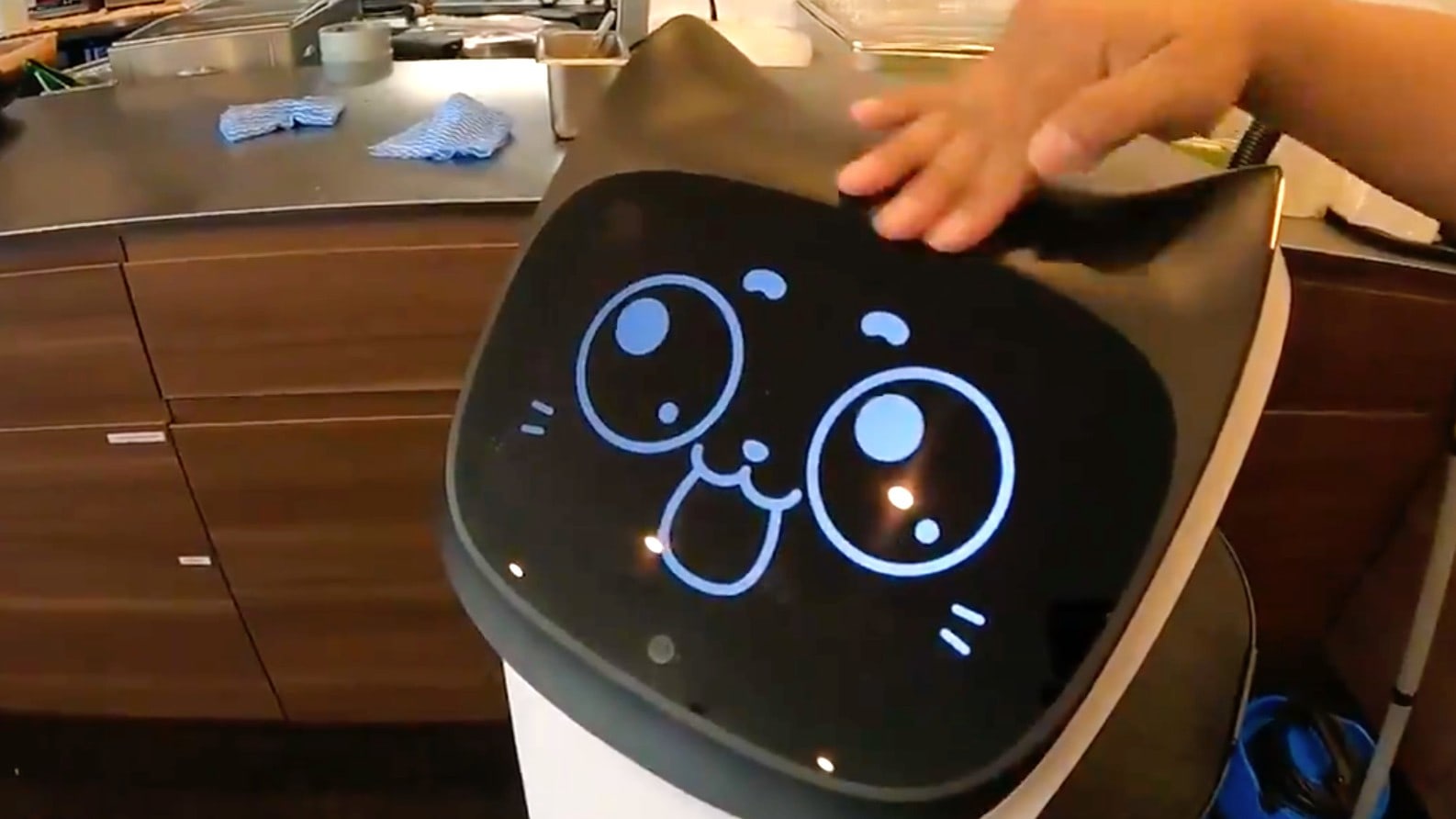Introducing technology to take care of the tables, Canberra Cafe resorts to extraordinary measures by hiring a robot.
A Canberra Cafe hired a robot to help clean the tables, but not because they wanted to replace people. Cafe owner Sam Vekiriya chose to do this because they were desperate for new employees.
Cafes and restaurants struggle to fill shifts due to a labor shortage, so the Canberra Cafe hired a robot to serve the tables and help with the labor shortage.

What exactly can the robot do?
Serves food to tables. Serves drinks to the table. Returns dirty dishes to the kitchen.
What does this high-tech robot servant cost?
After renting the robot for a trial period, Verkirya said he would buy it at an initial cost of about $30,000, which was well worth the investment.
Demand for autonomous employees in the hospitality industry
Robotic workers are just one example of automation in the hospitality industry.
According to ABC reporting, the addition of the robot was still a novelty. However, experts believe these workers could increase, especially in the hospitality industry.
Vekiriya also noted that the robot’s novelty was positive for the company. He stated that they had been looking for staff for more than a year and a half. Over the past three months, the cafe has become desperate for new employees.
As companies recognize the benefits of robots in their services, automation is gradually becoming more mainstream in the hospitality industry. This was once a problem due to the high cost of robots and lack of technology, but robots today offer a great solution as an affordable way for customers to get accurate service.
The benefits of robots in the hospitality industry
Robots in the hospitality industry bring many benefits, including that robots don’t show up late and don’t take breaks. While they can’t interact with customers in person, they’re a good way to make sure orders get from the kitchen to the customer’s table.
Industries now realize the benefits of automation. Robots are used for certain tasks, such as the delivery of orders. While automation is an option for some businesses, the Canberra Cafe used it to upgrade its industry.
COVID times robots mean less human contact, something guests feel very comfortable with as it reduces the chances of the virus spreading.
The recent pandemic has accelerated technology adoption in the hospitality industry in many ways. It was a much-needed boost (pun intended) in an industry that is notoriously slow in adopting new technology.
Hospitality visitors are now more tech-savvy than they were a few years ago. Many people have claimed they have become more comfortable using technology rather than direct human contact.
Negative options
Therese Douglas, a resident of Queensland, says she was recently at a cafe in Brisbane where one of these robots was standing.
“I thought it was terrible. Serve yourself and clean up after yourself. It also encountered almost unsuspecting customers entering the cafe,” she said.
What These Robots Can’t Do – Limitations
Can’t clear the tables Can’t clean up spilled Can’td Human customer interaction.
Will the human dimension ever disappear?
The human dimension will distinguish itself in hotels, cafes, and restaurants. In the future, luxury hospitality could be dominated by people-oriented service. Budget hotels could largely run on AI, robotics, and a small staff. However, luxury hotels have a visible human workforce supported by robots behind the scenes.
What is the future of Robots in Hospitality?
Globally, there are currently crisis labor shortages in the hospitality industry. This is not a temporary problem; many hotels are now looking for technology to help them deliver excellent service with fewer staff.
Current examples of robots used in the hospitality industry affirm they have a place. They can be quoted doing repetitive and dangerous tasks while freeing people up to provide the real hospitality components.
The savings in labor costs and technology-derived efficiencies will be more than enough to pay for the next-generation technology needed for robotics and automation in the hospitality industry.
Future use cases of robots could see the evolution of robots from waiting tables to potentially other tasks. At the moment, technology is still evolving, and it is anyone’s guess when humanyone’sbots or different types of robots can make their way into the hospitality industry.
According to the International Federation of Robots 2021 Service Robots Report, the pandemic caused the largest increase in the adoption of robot workers in the transportation and logistics industry. This was followed by cleaning and medical services.
Andrew Aston, director of Melbourne-based robotics consultancy Quantum Robotics, says the use of hospitality robots is unlikely to reduce the need for human staff, despite their obvious novelty.
“Do they provide”an opportunity to reduce the workforce of your staff? Probably not,” he said.
The Australi”n Council of Trade Unions (ACTU) is the highest body of Australian trade unions. It represents approximately 1.8 million workers and their families.
In a statement to the ABC secretary, Sally McManus says automation was far from a new phenomenon in many workplaces.
“Robots would only be w” come in the workplace to improve workers’ quality of life and safety,” says McManus.
Robots “n the hospitality market will grow at $291.74 million from 2022 to 2026, growing at a CAGR of 11.6% over the forecast period.
Together with QR menus and self-ordering… can we no longer call the industry ‘hospitality’?industry’
The TBN team is an established group of technology industry professionals with backgrounds in IT systems, business communications, and journalism.

